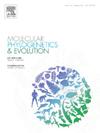Exploring the evolution of anaerobes within ciliate class Prostomatea by transcriptomics
IF 3.6
1区 生物学
Q2 BIOCHEMISTRY & MOLECULAR BIOLOGY
引用次数: 0
Abstract
Mitochondrion-related organelles (MROs) enable anaerobic eukaryotes to thrive in anoxic environments, and the independent ciliate lineages of anaerobes serve as excellent candidates for investigating the convergent evolutionary transition from mitochondria to MROs. Previous studies have demonstrated that the adaptations of ciliates to anaerobic conditions may be lineage-specific. However, our understanding of the diverse metabolic peculiarities of MROs is limited to a few ciliate lineages. In this study, we sequenced the transcriptomes of four anaerobic species from two genera (Apolagynus and Holophrya), which are classified within the predominantly aerobic class Prostomatea, and predicted their mitochondrial metabolisms. The ecological niches of prostomatean anaerobes were mapped onto newly constructed phylogenomic trees and small subunit (SSU) rDNA trees. Results showed that paraphyletic class Prostomatea containing six clades (Clade Ⅰ–Ⅵ) has a close relationship with Oligohymenophorea and Plagiopylea. Notably, all prostomatean species within Clade Ⅱ are anaerobic, while anaerobes are only sporadically present in other clades. The MROs of anaerobic prostomatean species display at least two distinct phenotypes. Holophrya ovum in Clade Ⅰ produces ATP by oxidative phosphorylation under aerobic conditions and via substrate-level phosphorylation via acetate: succinate CoA transferase (ASCT) and succinyl CoA synthetase (SCS) as well as adenylate kinase (AK) under anaerobic conditions. In contrast, three species of Apolagynus in Clade Ⅱ possess reduced electron transport chain (ETC), and are capable of ATP generation via substrate-level phosphorylation mediated by ASCT/SCS and propionyl-CoA. Additionally, these three Apolagynus species possess [FeFe] hydrogenase probably producing H2. A comparison of the ETC pathways among various anaerobic ciliates further showed that the MROs of these organisms have originated from repeated convergent evolution. Our findings shed lights on evolutionary history of anaerobes within the ciliate class Prostomatea.

利用转录组学研究纤毛虫纲Prostomatea厌氧菌的进化。
线粒体相关细胞器(mro)使厌氧真核生物能够在缺氧环境中茁壮成长,而厌氧菌的独立纤毛虫谱系为研究线粒体向mro的趋同进化转变提供了极好的候选者。先前的研究表明,纤毛虫对厌氧条件的适应可能是谱系特异性的。然而,我们对mro的多种代谢特性的理解仅限于少数纤毛虫谱系。在这项研究中,我们对来自两个属(Apolagynus和Holophrya)的四个厌氧物种的转录组进行了测序,这些物种被归为主要的有氧类Prostomatea,并预测了它们的线粒体代谢。将原口厌氧菌的生态位定位到新构建的系统基因组树和小亚单位rDNA树上。结果表明,副翅目Prostomatea有6个支系(支系I-Ⅵ),与少膜蜂科和翼叶科亲缘关系密切。值得注意的是,II支系中所有的原口动物都是厌氧动物,而厌氧动物仅零星存在于其他支系中。厌氧prostomate物种的mro表现出至少两种不同的表型。进化纲I的Holophrya卵在有氧条件下通过氧化磷酸化产生ATP,在厌氧条件下通过乙酸:琥珀酸辅酶a转移酶(ASCT)和琥珀酸辅酶a合成酶(SCS)以及腺苷酸激酶(AK)进行底物水平磷酸化。相比之下,进化枝II中的三种Apolagynus具有减少的电子传递链(ETC),并且能够通过ASCT/SCS和丙酰辅酶a介导的底物水平磷酸化产生ATP。此外,这三个Apolagynus物种具有可能产生H2的[FeFe]氢化酶。通过对不同厌氧纤毛虫ETC途径的比较,进一步表明这些生物的mro起源于反复趋同进化。我们的发现揭示了厌氧菌在纤毛虫纲Prostomatea的进化史。
本文章由计算机程序翻译,如有差异,请以英文原文为准。
求助全文
约1分钟内获得全文
求助全文
来源期刊
CiteScore
7.50
自引率
7.30%
发文量
249
审稿时长
7.5 months
期刊介绍:
Molecular Phylogenetics and Evolution is dedicated to bringing Darwin''s dream within grasp - to "have fairly true genealogical trees of each great kingdom of Nature." The journal provides a forum for molecular studies that advance our understanding of phylogeny and evolution, further the development of phylogenetically more accurate taxonomic classifications, and ultimately bring a unified classification for all the ramifying lines of life. Phylogeographic studies will be considered for publication if they offer EXCEPTIONAL theoretical or empirical advances.

 求助内容:
求助内容: 应助结果提醒方式:
应助结果提醒方式:


